Explanation for Inserted analyzing photograph
<The shape of flower (3) The Expansion of the Mathura construction theory,
and going to East>
The succeeded Mathura theory to Asuka buddha sculptures in Horyuji
x s
Analysing Photograph
Next both buddhism sculptures ware made by the same construction theory(gauge).
Kuze-Avalkitersvara (horyuji the asuka-age Japan) was constructed from
6 connection of the shape of flower (3step diminishing). Standing Buddha
excavated in Jamalpur (mathura A5/the gupta-age India) was constructed
from 3 connection. The method of basic figure is below photograph of sculptures.
Kuze-Avalkitersvara standing Bodhisattva in Horyuji Yumedono (the asuka-age/7th-century
Japan)
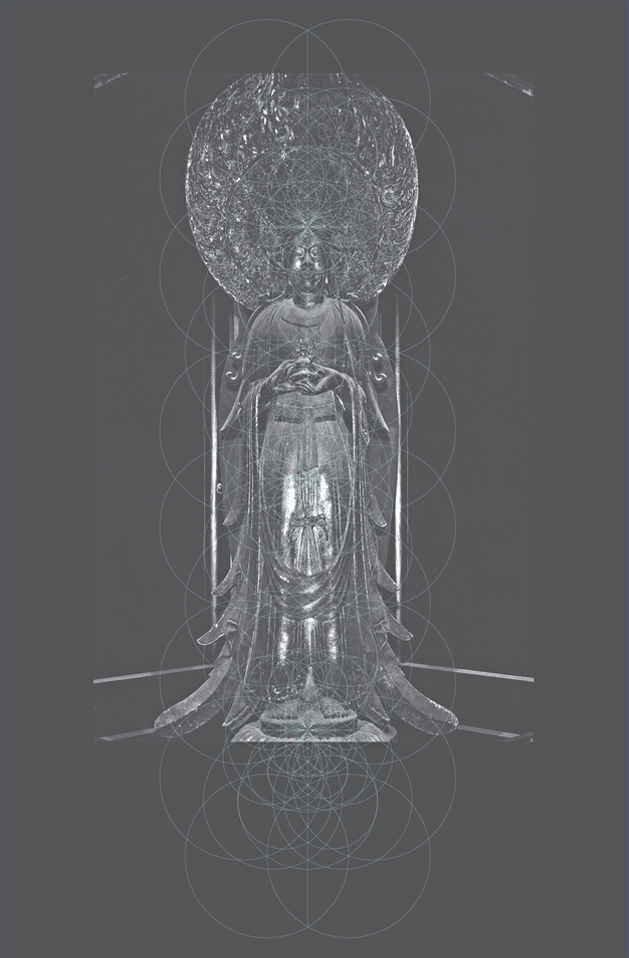
Kuze-Avalkitersvara details (3step-6vertical) high-jpg
Kuze-Avalkitersvara details (3step-6vertical) PDF

Kuze-Avalkitersvara details (8radial-3vertical) line-0.04 high-jpg
Kuze-Avalkitersvara details (8radial-3vertical) line-0.07 high-jpg
Kuze-Avalkitersvara details (8radial-3vertical) PDF
Standing Buddha excavated in Jamalpur (mathura A5 the gupta-age/5th-century
India)
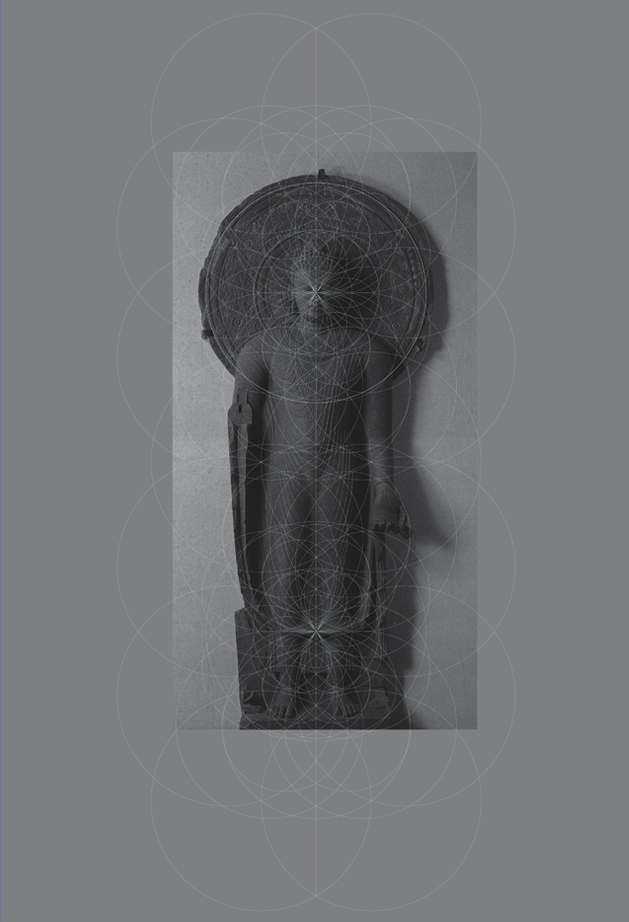
Jamalpur-buddha details (3step-4vertical) high-jpg
Jamalpur-buddha details (3step-4vertical) PDF
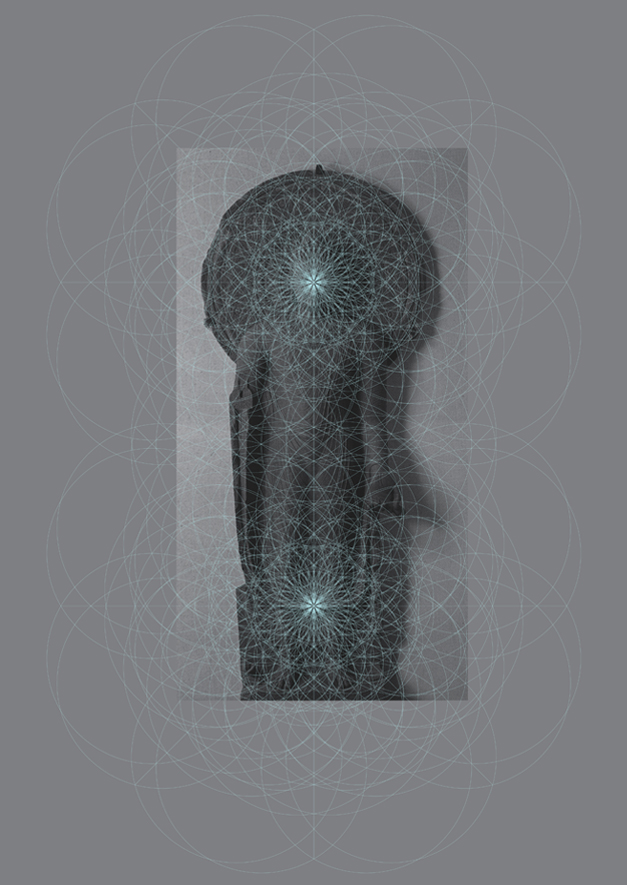
Jamalpur-buddha details (8radial-2vertical) high-jpg
Jamalpur-buddha details (8radial-2vertical) PDF
A unit of The construction connecting the shape of flower
The 3 step diminished figure of right side is showing a unit of connection. The result of connecting by some units vertically is <The construction connecting the shape of flower>, showing below.
| a unit of shape of flower |
adding second diminished unit |
adding third diminished unit
(unit of connection) |
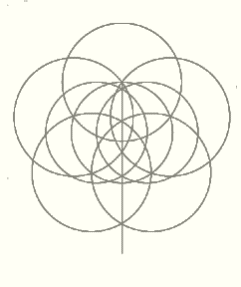 |
 |
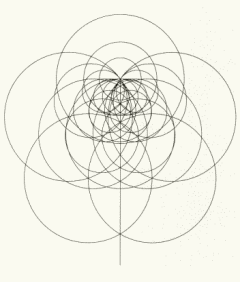 |
The construction connecting the shape of flower
Here is the construction that was gained by connection of 3 step diminished
units. This figure shows gauge of Buddha excavated in Jamalpur(Gupta-age
India) sculpture in up side. The gauge of Kuze-Avalkitersvara(Asuka-age
japan) is the construction adding more 2 units.
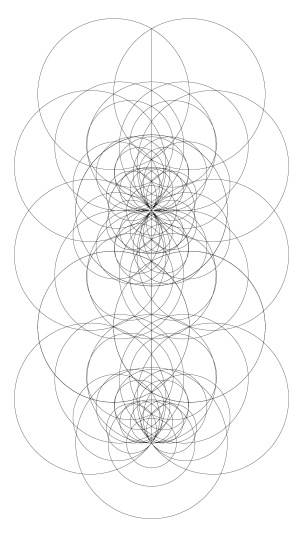
The halo of Kuze-Avalkitersvara
It was confirmed that concentric circles of the halo are synchronizing circles of gauge.
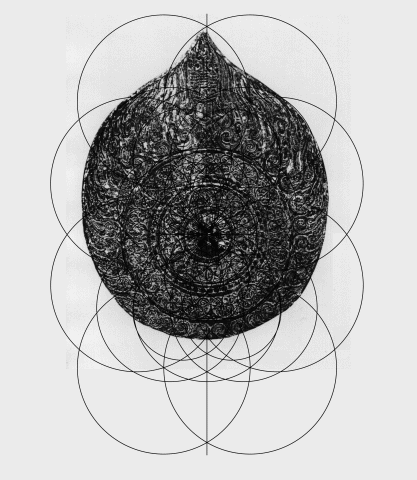
Analyze of concentric circles from rubbing of halo
This analyzed photograph was made by superposing a cut part of the rubbing
of halo of Kuze-Avalkitersvara on the gauge. It can say that the first
and second circles are synchronizing the circles of gauge (though being
very few gap.). The third circle of the sculpture is slightly small than
the gauge. There is the circle of the halo that is synchronizing the second
circle of the gauge. The circle of the halo that is one step over outside
than this seems that was provided by the position of very important cross
point of the gauge.
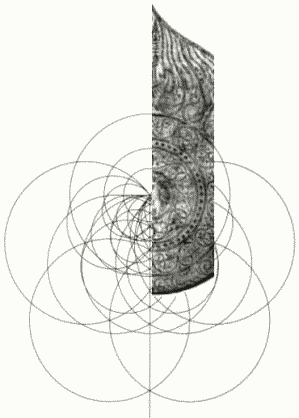
Buddha triad in horyuji main hall (the asuka-age/7th-century Japan)
It can confirm that 3 circles of the halo are completely synchronizing
3 circles of the gauge. It should understand that the halo of Buddha excavated
in Jamalpur and this halo of Horyuji Buddha, both main concentric circles
ware constructed by perfect the same rate.
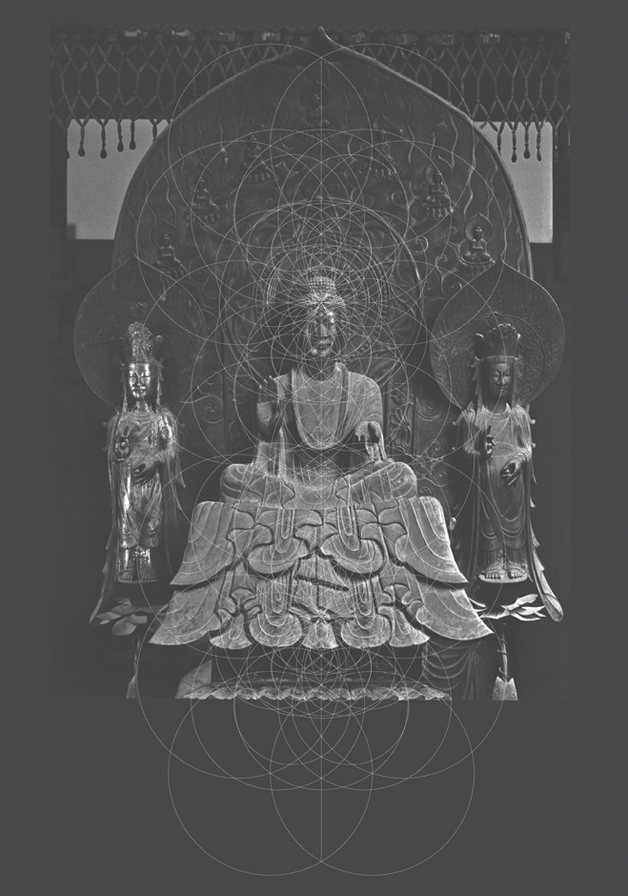
Horyuji-buddha detail (3step 4vertical) high-jpg
Horyuji-buddha detail (3step 4vertical) PDF
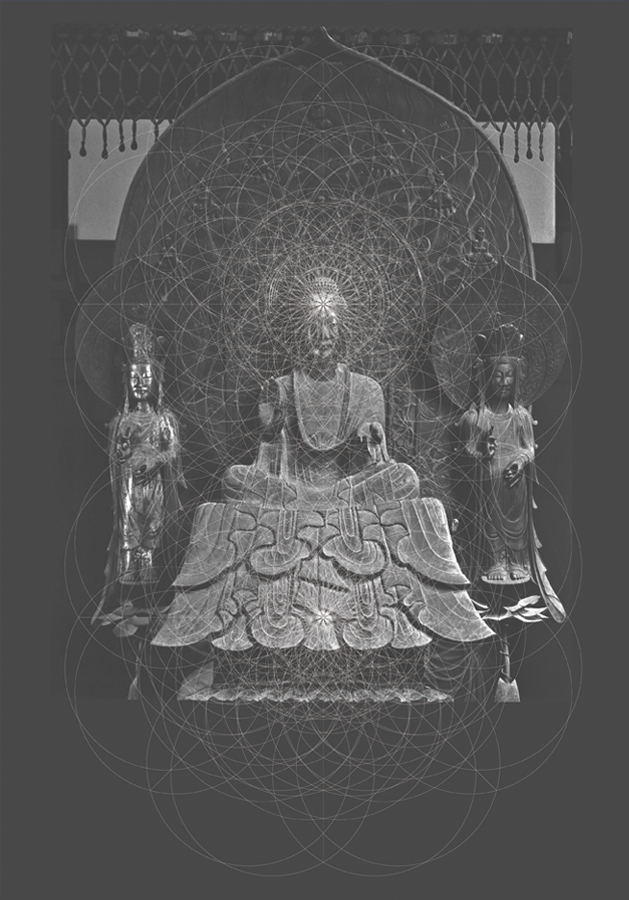
Horyuji-buddha detail (8radial 2vertical) high-jpg
Horyuji-buddha detail (8radial 2vertical) PDF
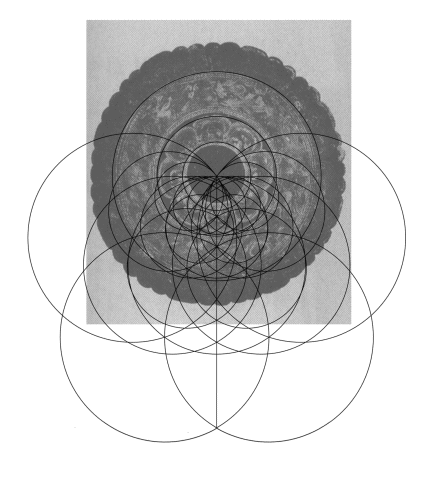
Construction of ancient mirrors in China and Japan
Historical total development
The Consecutive
Constructive theory of Buddhism
Arts and Ancient Mirrors
The explanation to the constructive theory of buddhism sculptures that
the early Mathura school shows, the Progressive step in the gupta mathura
school and Asuka sculptures Japan and Vajrayana Mandala Tibet. The origin of this theory is found in wide
Eurasia area before Mahayana.
The shape of flower@sno
e-mail Jabrec-Art-Music












